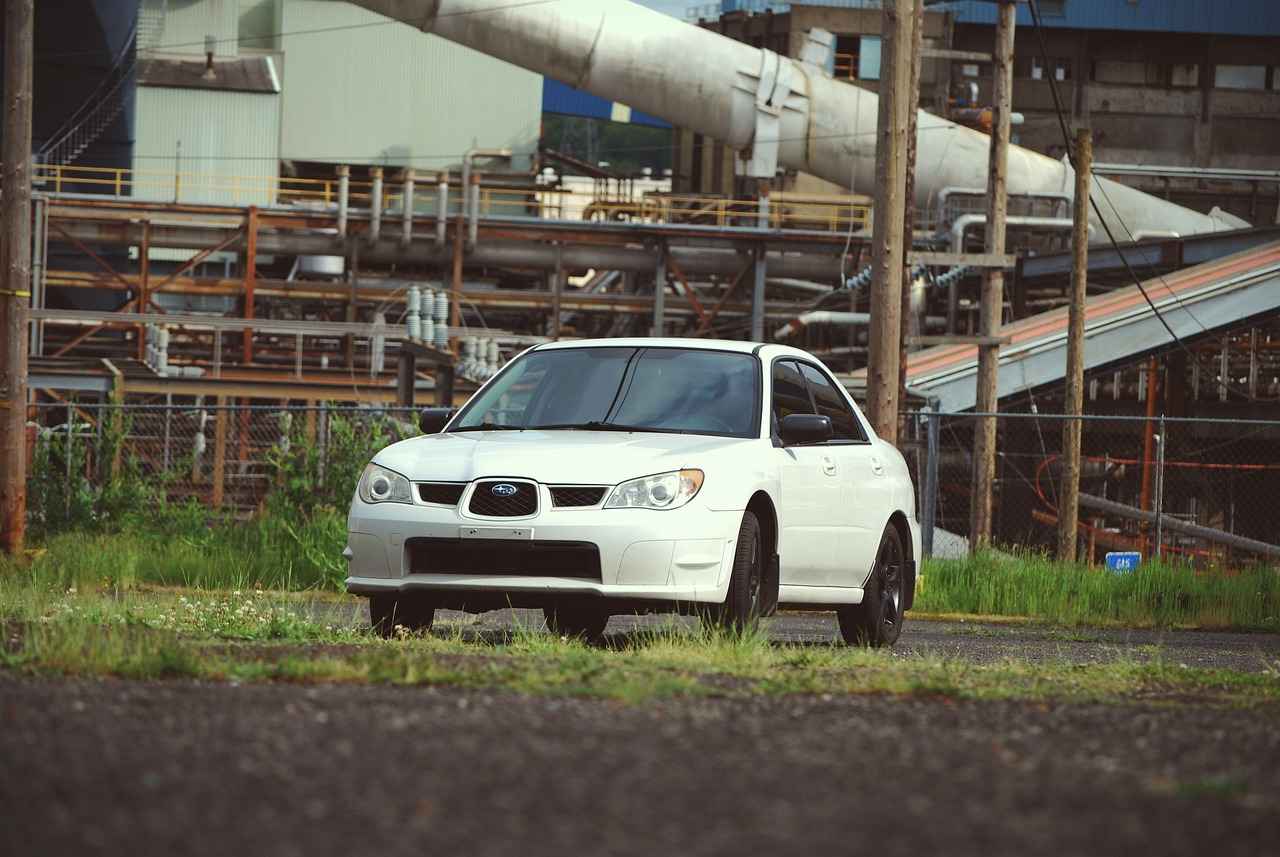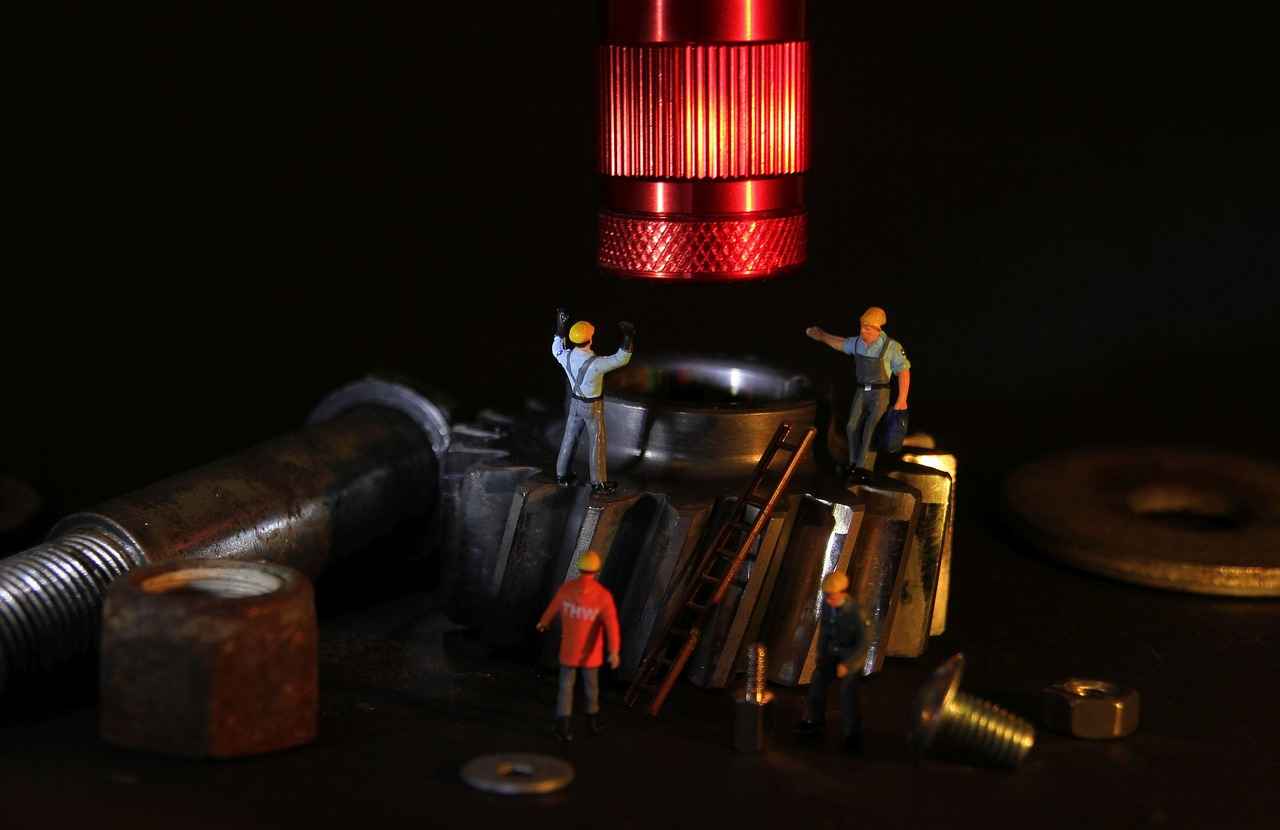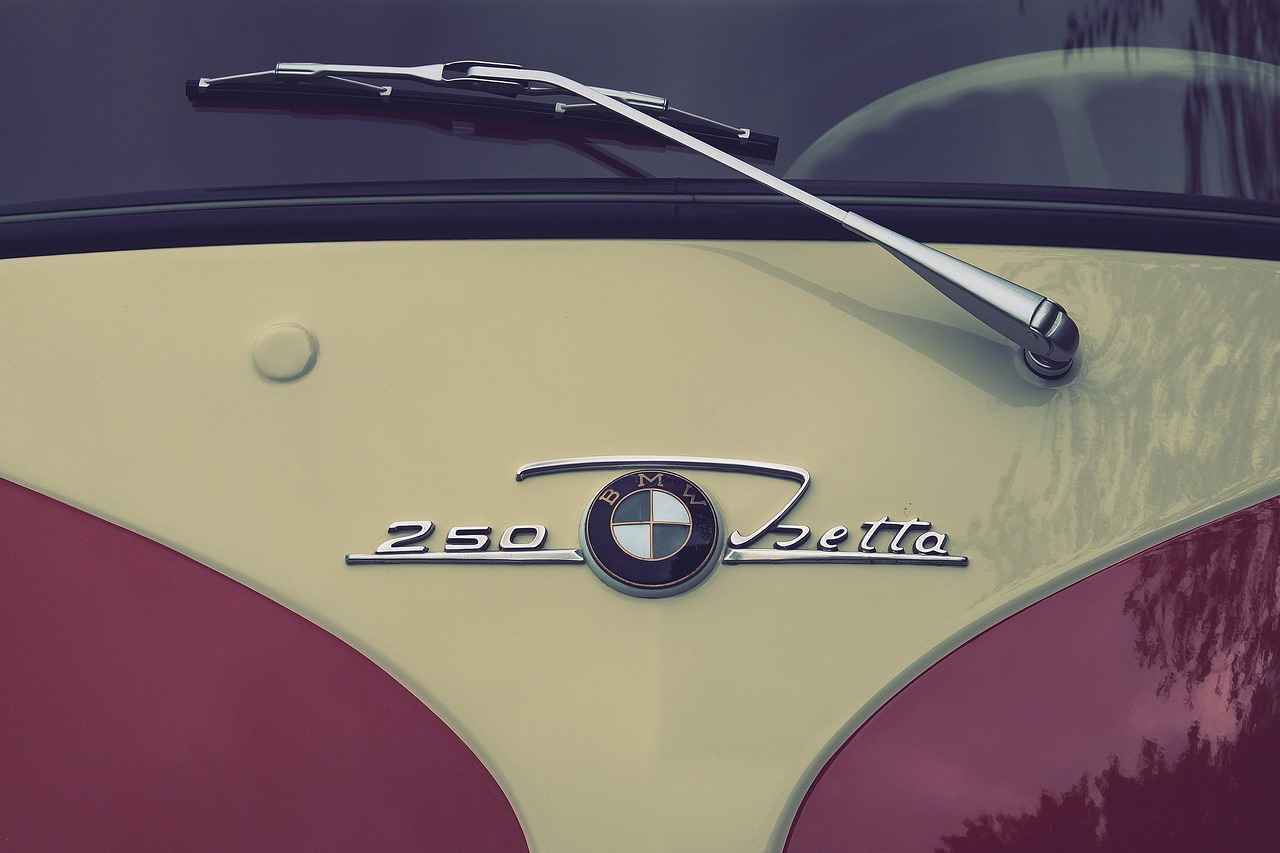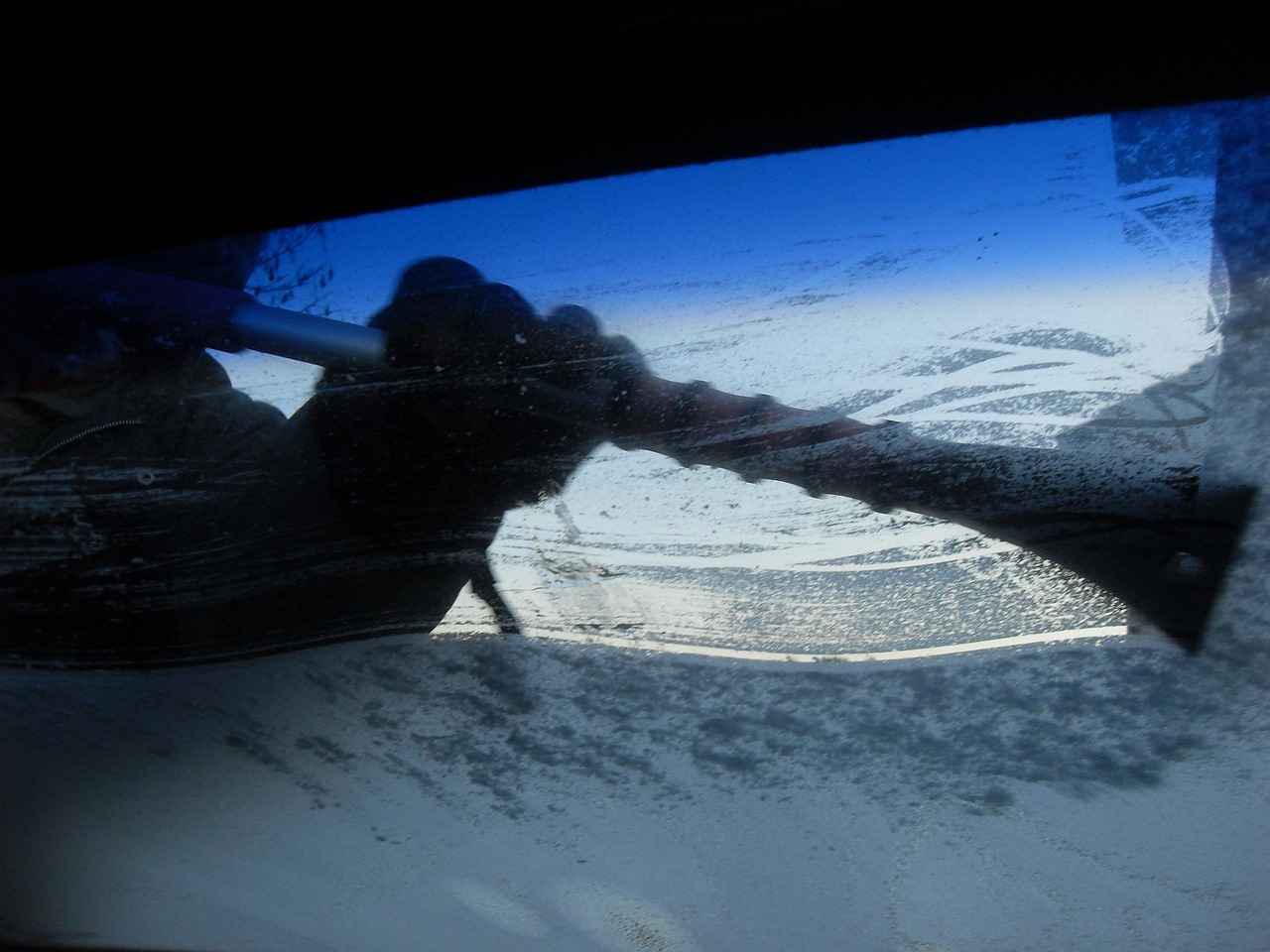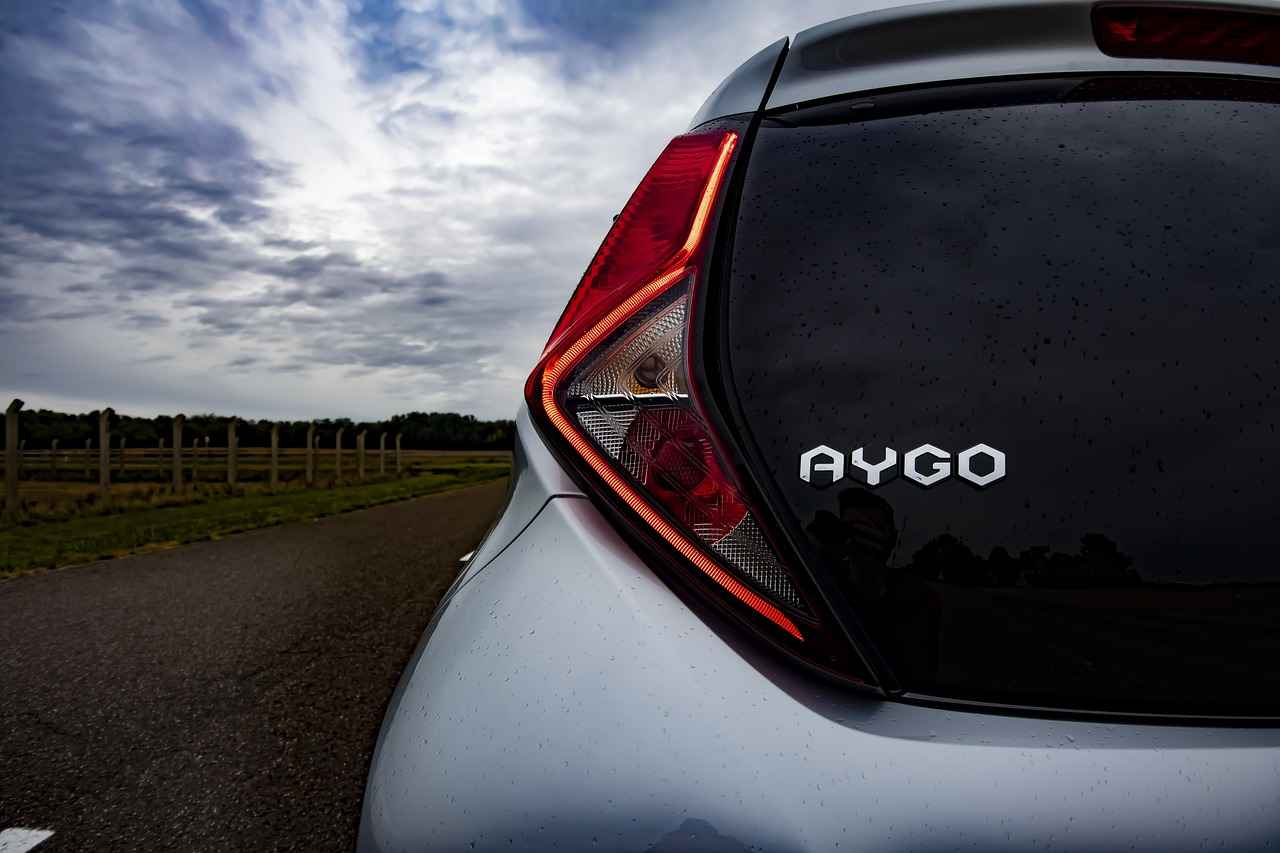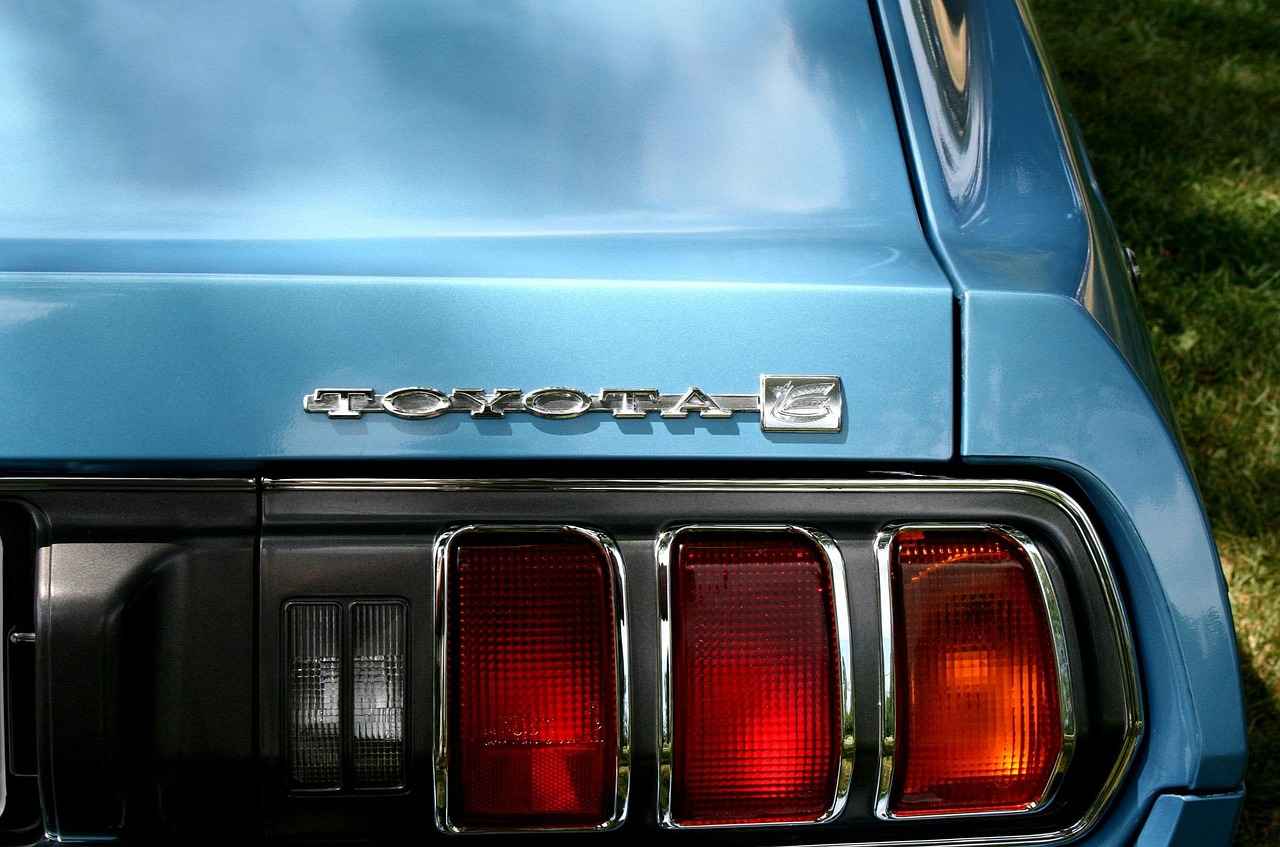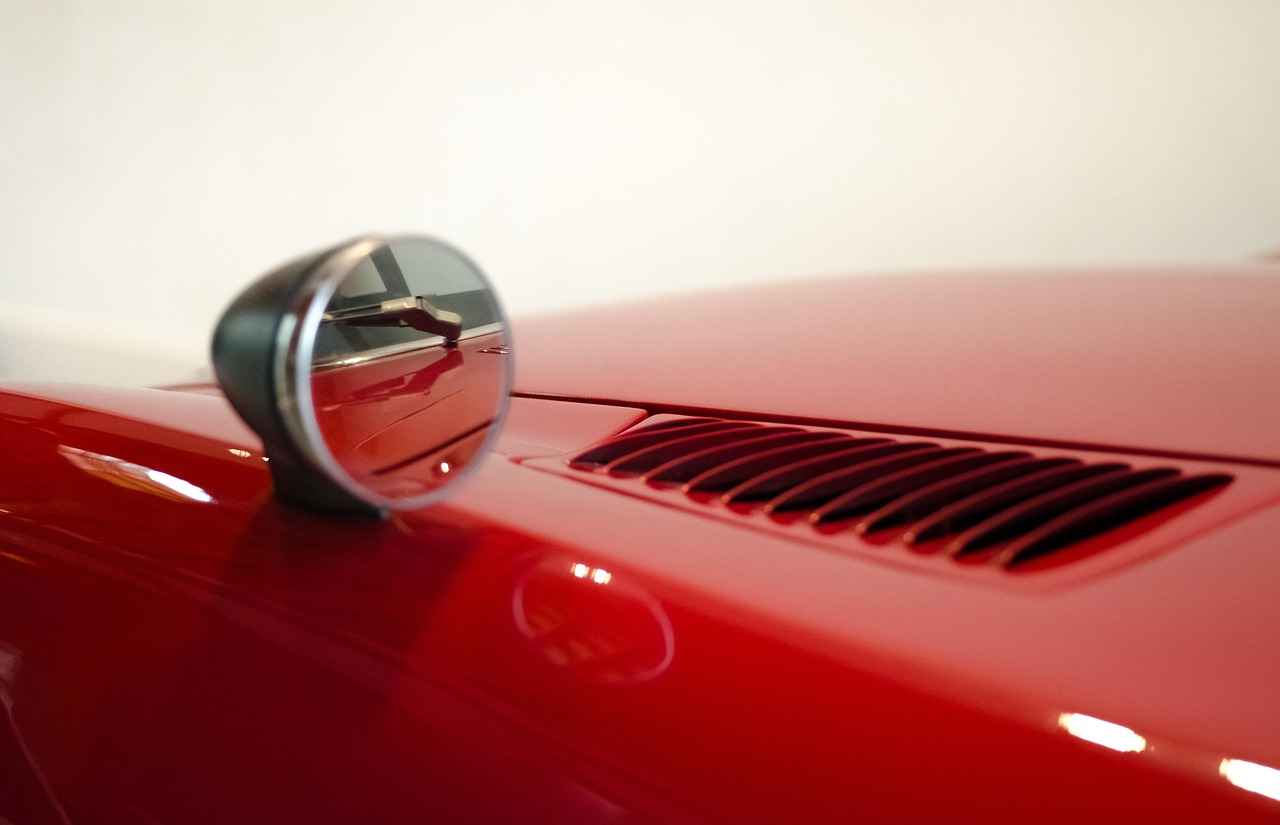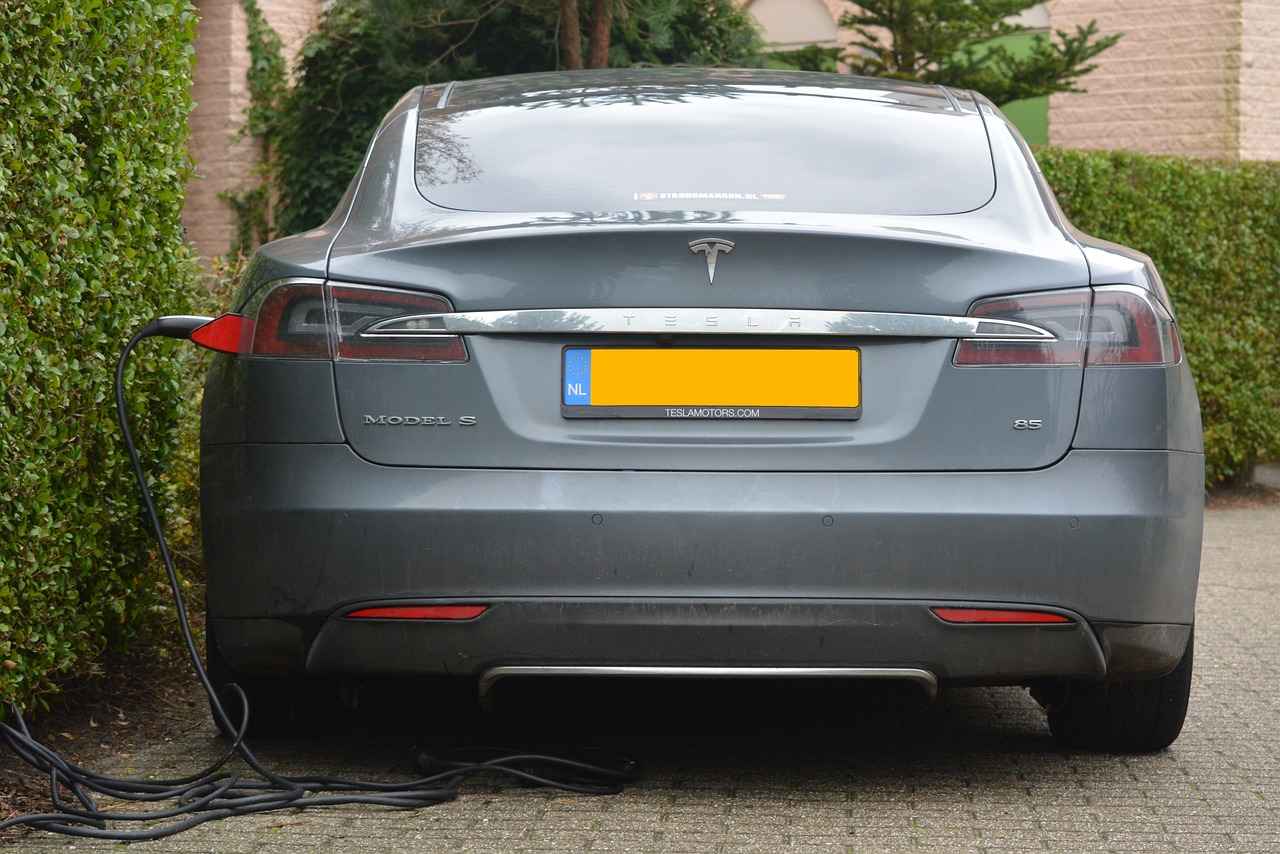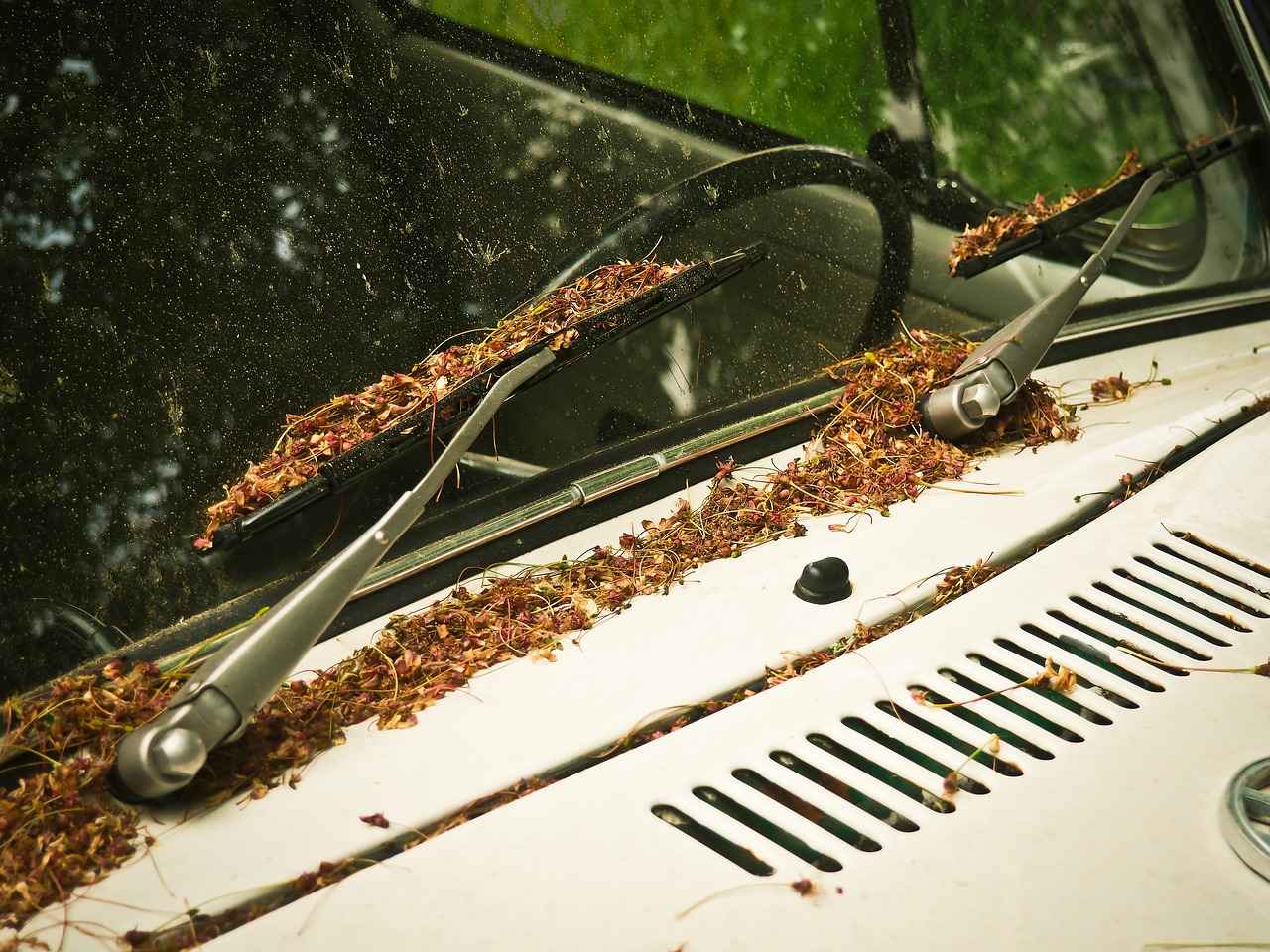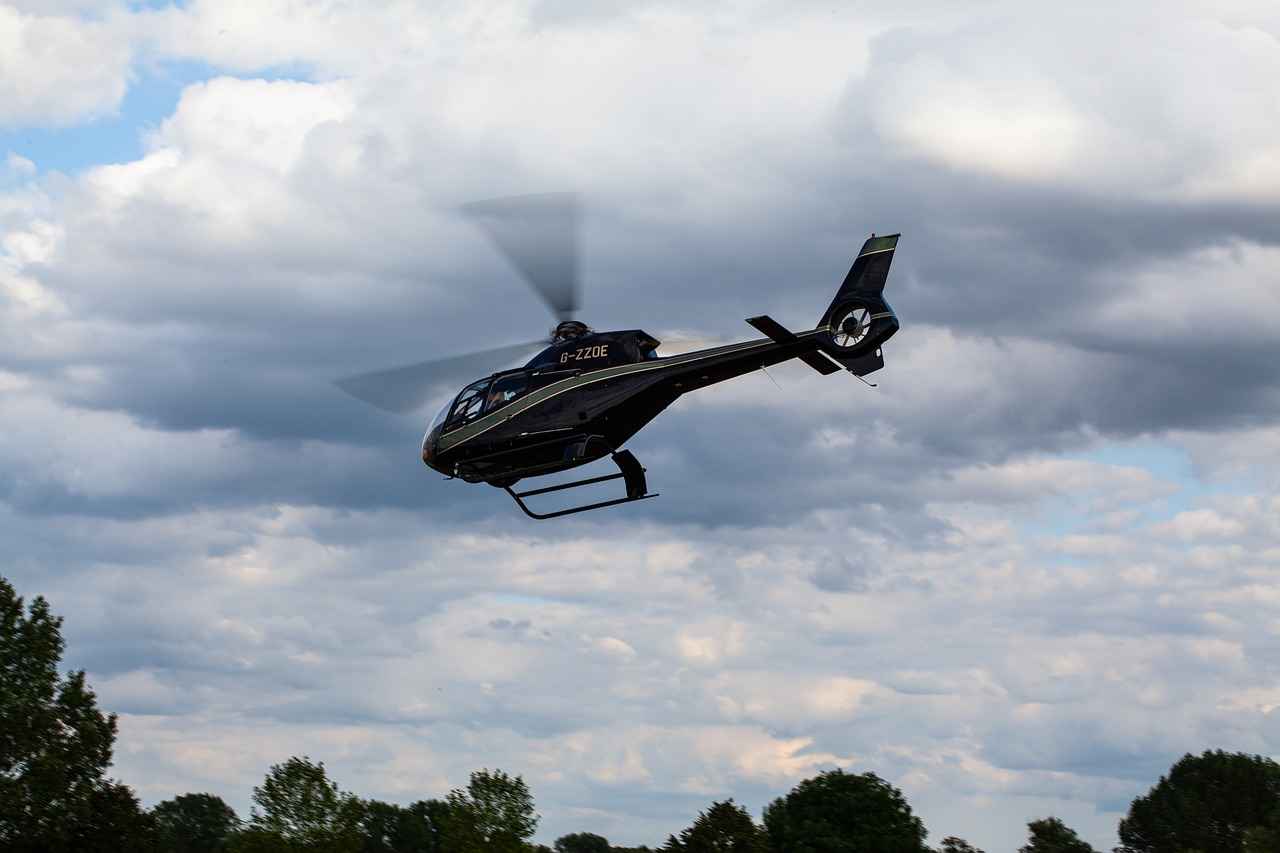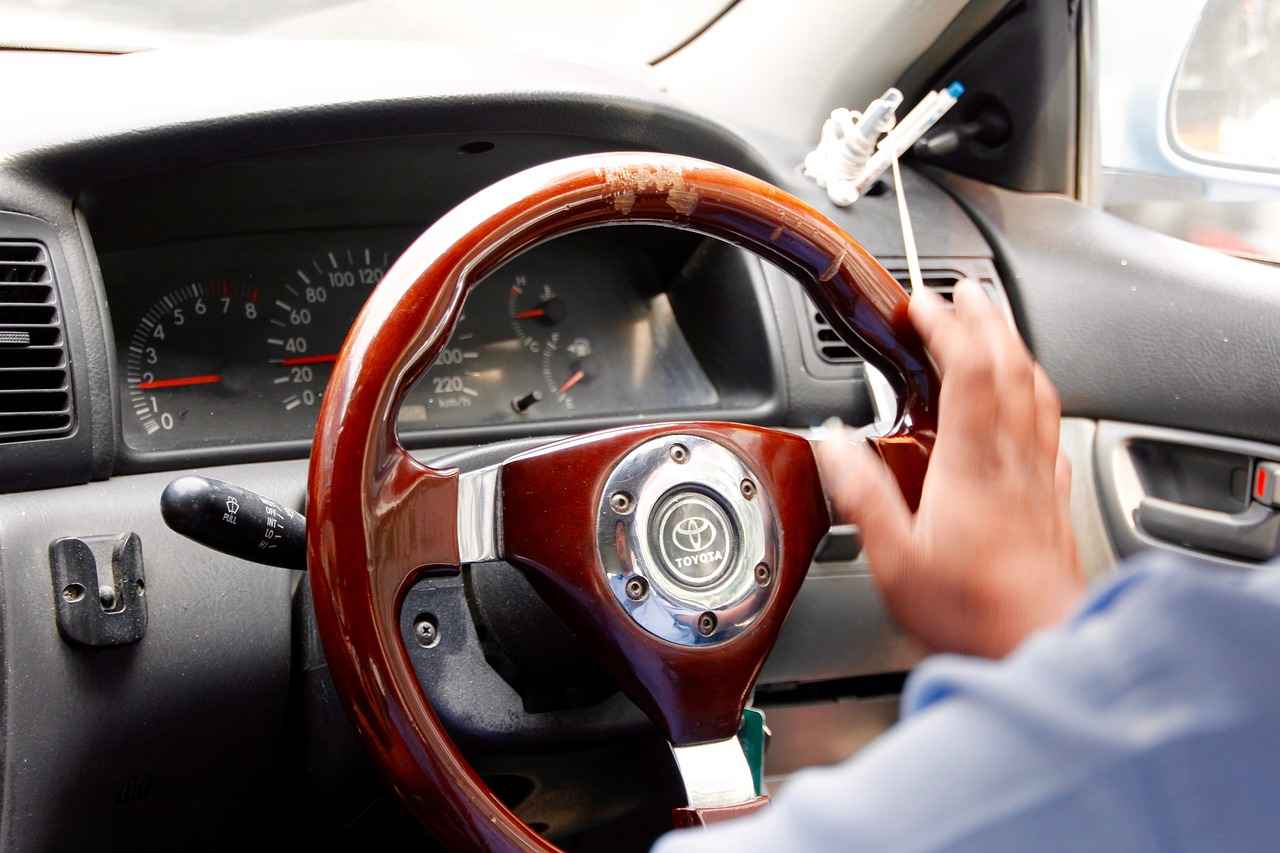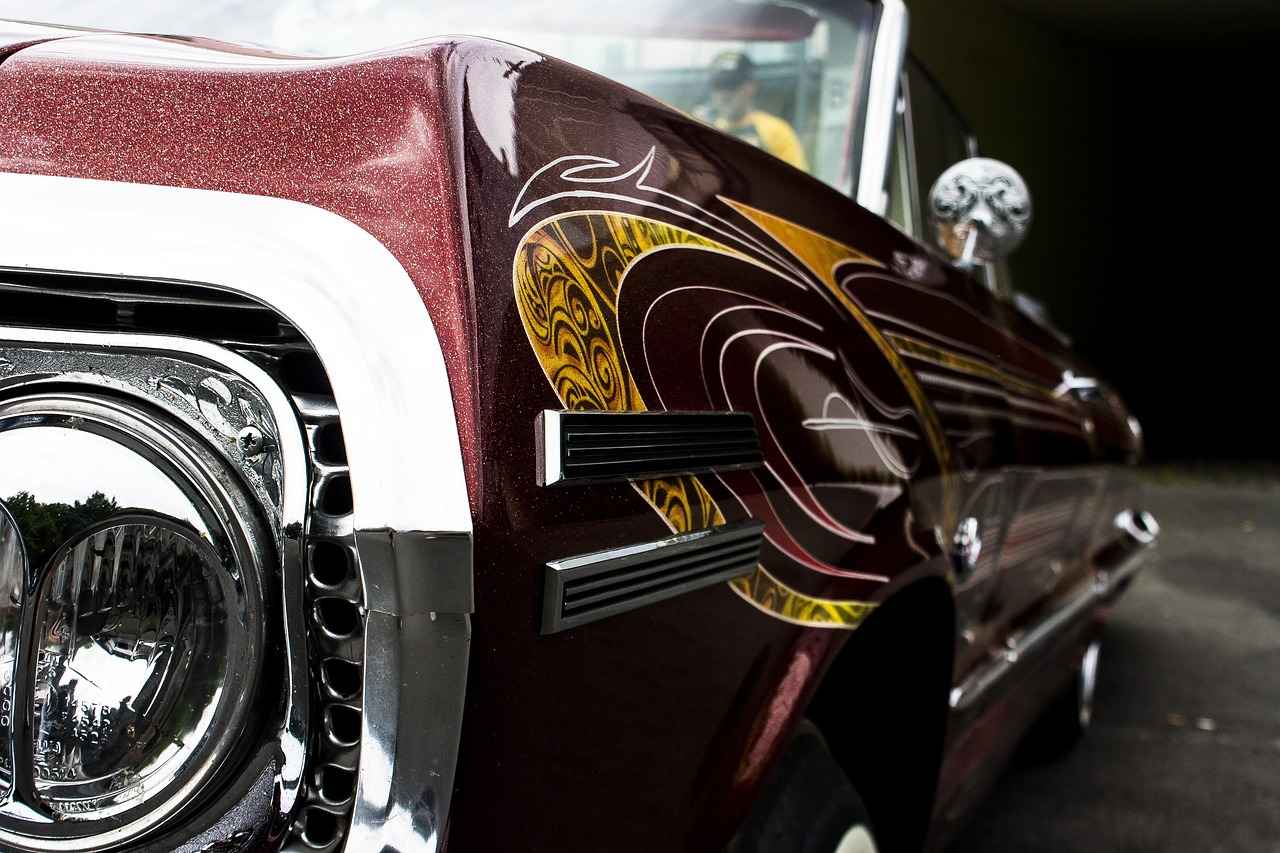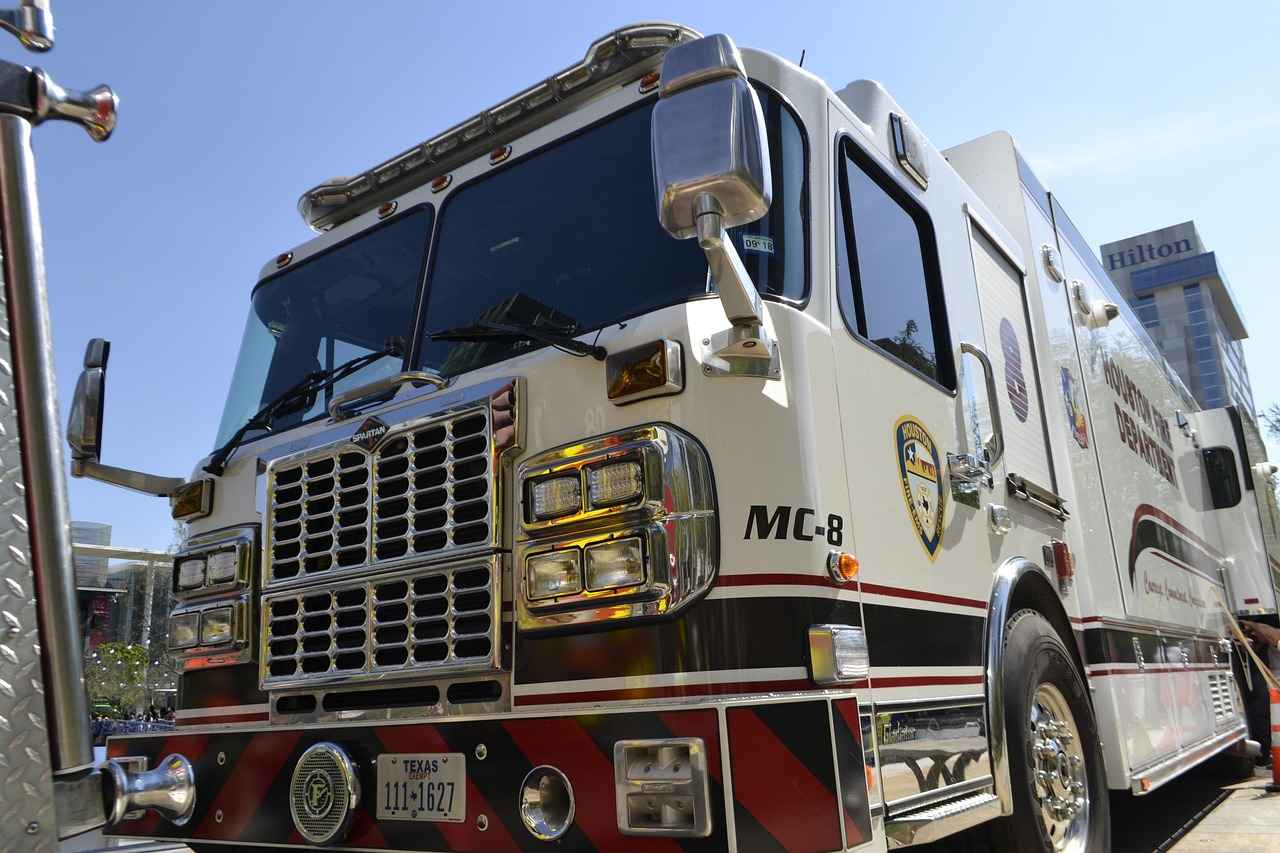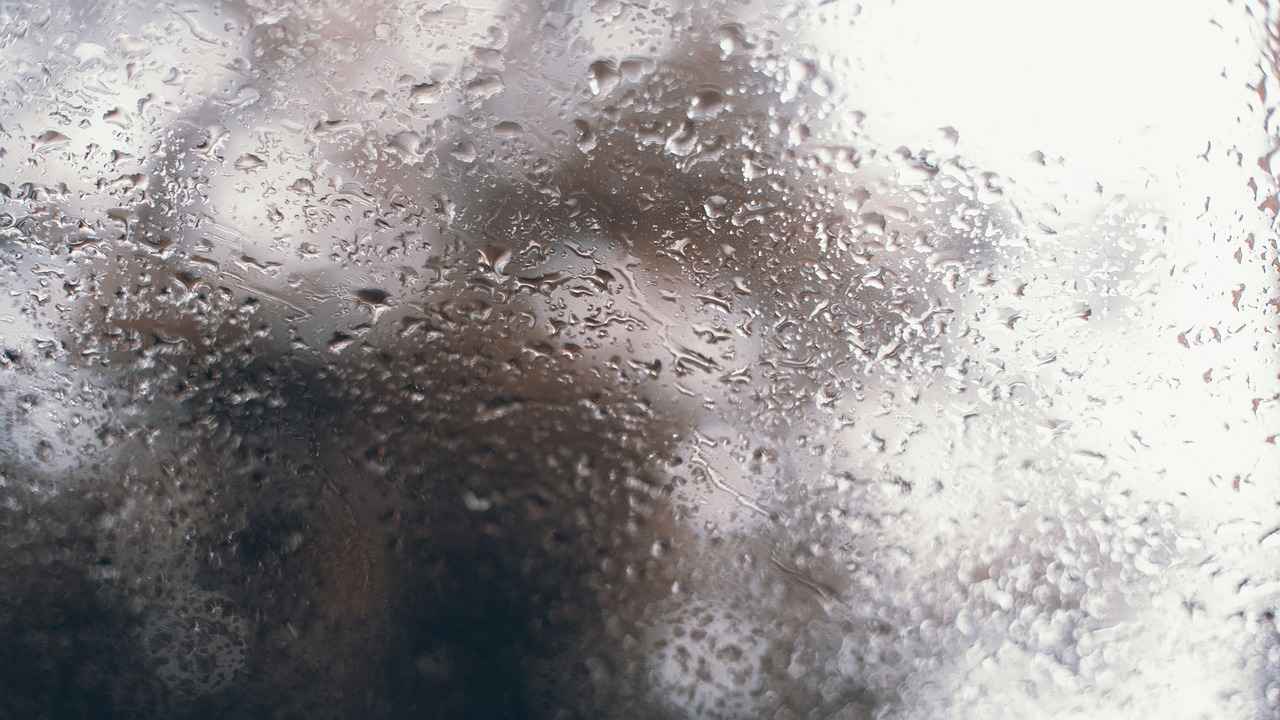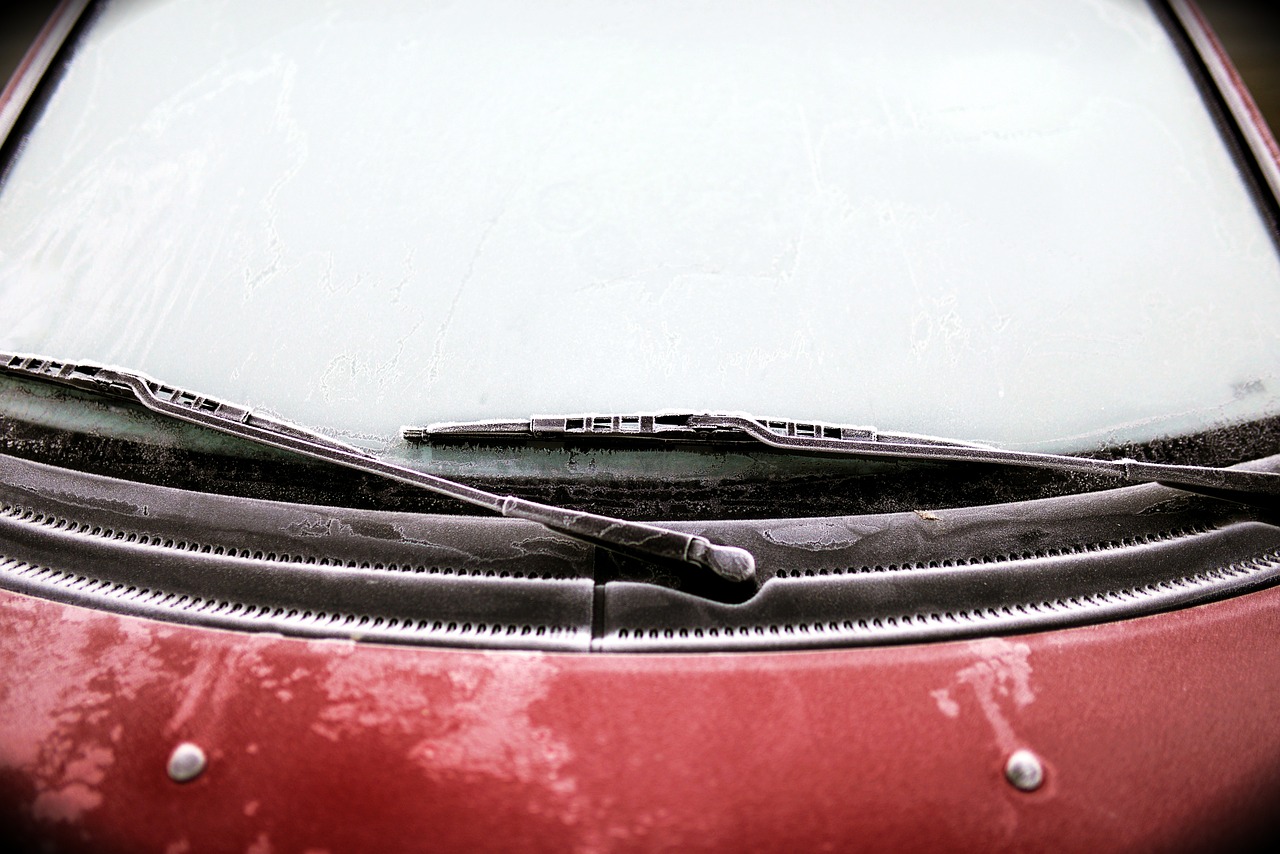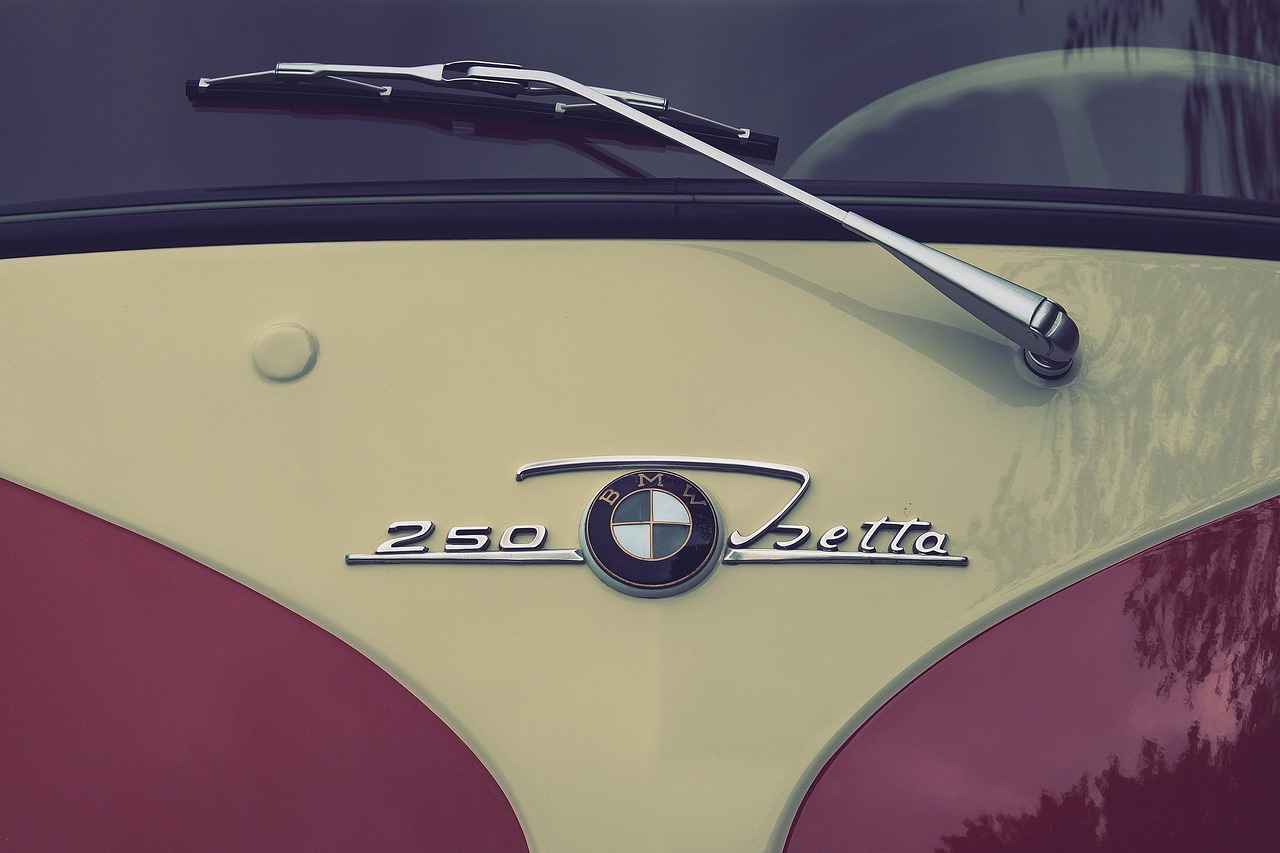When it comes to vehicle safety, windshield wipers play a crucial role in ensuring clear visibility, especially during adverse weather conditions. Many drivers overlook the importance of maintaining their wipers, but recognizing the signs that indicate it’s time for a replacement can significantly enhance your safety on the road. This article will delve into the critical indicators that signal it’s time to replace your windshield wipers, ensuring your safety and visibility.
It’s essential to be aware of the signs that your windshield wipers need replacement. Here are some of the most common indicators:
- Streaking: If your wipers leave streaks on your windshield instead of clearing it, this is a clear sign of wear and tear.
- Chattering: A chattering or skipping motion during operation indicates that the wiper blades are damaged or improperly aligned.
- Cracks or Tears: Inspect your wiper blades for visible cracks, tears, or missing pieces, which can severely impact their performance.
- Age: If your wipers are over six months to a year old, it’s wise to consider replacing them, especially if you live in an area with extreme weather.
Regular maintenance is key to vehicle safety. Experts recommend replacing windshield wipers every 6 to 12 months, depending on usage and weather conditions. Factors such as exposure to sunlight and extreme temperatures can affect wiper longevity. For those who frequently drive in harsh conditions, more frequent replacements may be necessary.
Understanding the various elements that influence how long your windshield wipers last can help you make informed decisions about maintenance and replacement. Here are some key factors:
- Weather Conditions: Extreme weather can take a toll on your wipers. Intense heat can cause rubber to dry out and crack, while snow and ice can lead to wear and tear.
- Wiper Blade Material: Different materials offer varying levels of durability. Silicone blades, for instance, tend to last longer than traditional rubber blades.
Simple maintenance practices can prolong the life of your windshield wipers. Here are some practical tips:
- Regular Cleaning: Keep the wiper blades clean by wiping them with a damp cloth to remove dirt and debris.
- Use Proper Wiper Fluid: Ensure you’re using the right windshield washer fluid, as some fluids can degrade the rubber over time.
- Park in Shade: Whenever possible, park your vehicle in the shade to protect the wipers from sun damage.
Ignoring the need for wiper replacement can lead to dangerous driving conditions. Here are the potential risks associated with using ineffective wipers:
- Reduced Visibility: Driving with worn wipers significantly impairs visibility, increasing the risk of accidents and road hazards.
- Damage to Windshield: Old wipers can scratch your windshield, leading to costly repairs. Replacing wipers in a timely manner can help you avoid these issues.
By paying attention to these signs and factors, you can ensure that your windshield wipers are always in top condition, providing you with the visibility you need to drive safely in any weather.

What Are the Common Signs That Indicate Wiper Replacement?
When it comes to vehicle maintenance, one of the most crucial components often overlooked is the windshield wipers. These essential tools ensure that you maintain clear visibility during rain, snow, or any adverse weather conditions. Recognizing the signs that your windshield wipers need replacement is essential for your safety on the road. This section covers the most common indicators you should watch for.
- Streaking on the Windshield: If your windshield wipers leave streaks or patches of water behind, it’s a clear sign that the rubber blades are worn out. This can significantly impair your visibility, especially during heavy rain.
- Skipping or Chattering: When wipers skip across the windshield or make a chattering noise, it indicates that the blades are not making proper contact with the glass. This can be due to wear or damage.
- Cracks or Tears: A visual inspection can reveal cracks, tears, or other damage on the wiper blades. If you notice any physical damage, it’s time to replace them.
- Reduced Effectiveness: If you find yourself frequently adjusting the wipers to achieve adequate visibility, it’s a sign they are not performing as they should. This can lead to unsafe driving conditions.
- Age of the Wipers: Even if there are no visible signs of wear, windshield wipers should generally be replaced every six months to a year. Over time, the rubber can degrade due to exposure to sunlight and extreme temperatures.
It’s important to regularly check your wipers, especially before the rainy season or winter months. By being proactive, you can ensure your safety and that of your passengers.
In addition to recognizing these signs, understanding the importance of timely replacement cannot be overstated. Worn-out wipers can lead to dangerous driving conditions, as they fail to clear rain, snow, or debris effectively. This can result in reduced visibility, increasing the risk of accidents.
Moreover, ignoring the need for replacement can cause damage to your windshield. Old wipers can scratch the glass, leading to costly repairs. Therefore, keeping an eye on the condition of your wipers is not just about visibility; it’s also about protecting your vehicle investment.
In summary, being aware of these common signs that indicate wiper replacement can significantly enhance your driving safety. Regular maintenance of your windshield wipers is a simple yet effective way to ensure you have a clear view of the road ahead, regardless of the weather conditions.
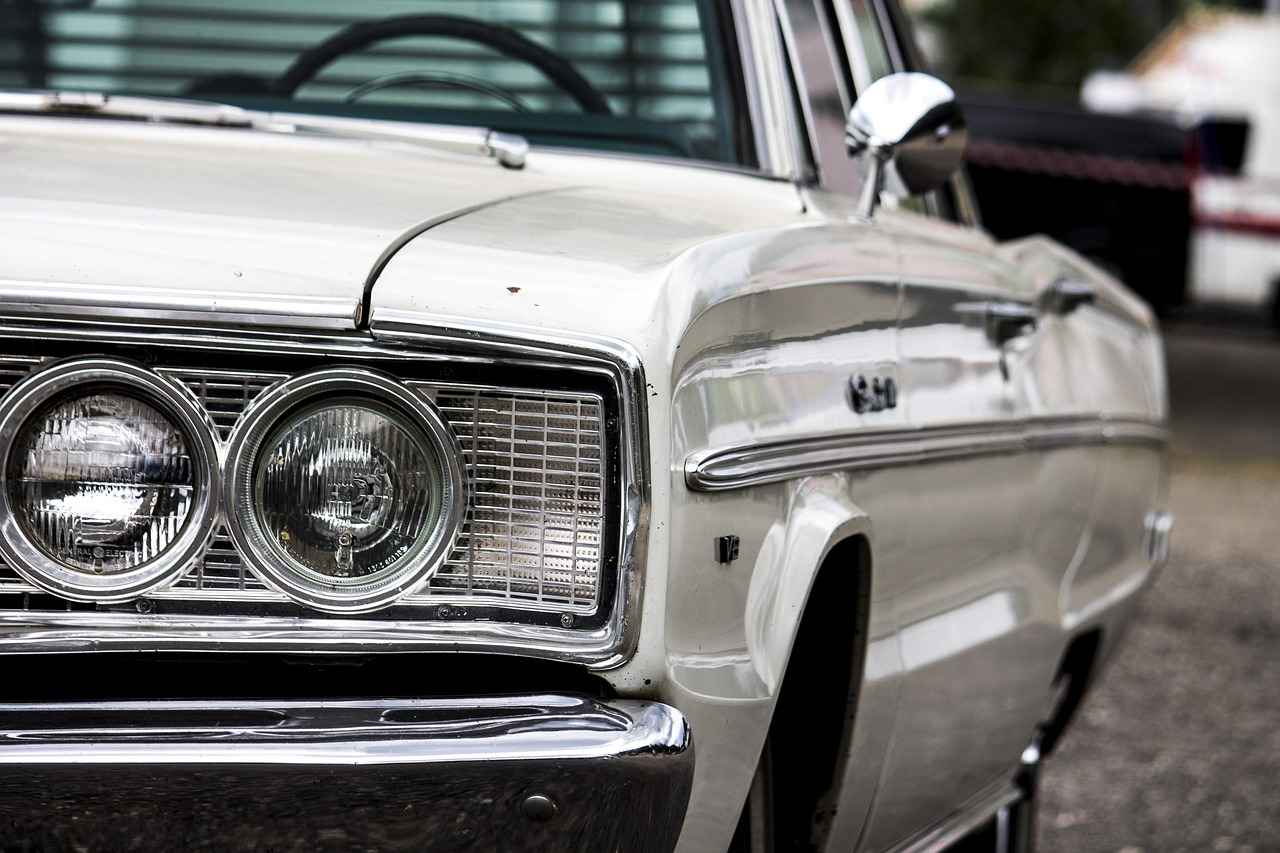
How Often Should You Replace Windshield Wipers?
When it comes to ensuring your safety on the road, regular maintenance of your vehicle is crucial. One often-overlooked aspect of vehicle upkeep is the condition of your windshield wipers. In this section, we will explore how often you should replace windshield wipers, the recommended replacement intervals, and the various factors that can impact the longevity of your wipers.
Generally, it is advisable to replace your windshield wipers every 6 to 12 months. However, this can vary based on several factors, including climate, usage, and the quality of the wiper blades themselves. Here are some guidelines to consider:
- Every 6 Months: If you live in an area with extreme weather conditions, such as heavy rain or snow, you may need to replace your wipers more frequently.
- Every 12 Months: For those in milder climates, a yearly replacement may suffice.
- Inspect Regularly: Even if you haven’t reached the recommended interval, inspect your wipers regularly for signs of wear and tear.
Understanding the factors that influence the lifespan of your windshield wipers can help you make informed decisions about their maintenance. Here are some key elements:
- Weather Conditions: Extreme heat or cold can cause the rubber on wiper blades to deteriorate faster. For instance, UV rays can lead to cracking, while icy conditions can make the rubber less flexible.
- Usage: Frequent use of your wipers in adverse weather will naturally wear them out more quickly. If you find yourself using them daily, consider more frequent replacements.
- Wiper Blade Material: The material of the wiper blade itself plays a significant role in its durability. Premium materials, such as silicone, tend to last longer than standard rubber blades.
Taking proactive steps can help prolong the life of your windshield wipers:
- Regular Cleaning: Keep your wiper blades clean by wiping them with a damp cloth to remove dirt and debris.
- Use the Right Fluid: Ensure that you are using quality windshield washer fluid to prevent residue buildup.
- Avoid Using Wipers on Dry Glass: This can cause unnecessary wear and tear on the blades.
By understanding these factors and following these recommendations, you can ensure that your windshield wipers remain effective, providing you with the visibility you need during inclement weather. Remember, neglecting your wiper maintenance can lead to reduced visibility and increased risk on the road.
What Factors Affect Wiper Lifespan?
When it comes to vehicle maintenance, understanding the various elements that influence how long your windshield wipers last is crucial. By being aware of these factors, you can make informed decisions about maintenance and timely replacement, ensuring your safety on the road.
Several key elements contribute to the longevity of your windshield wipers. By recognizing these factors, you can take proactive steps to extend their life and maintain optimal visibility during adverse weather conditions.
- Weather Conditions: Extreme weather can significantly impact the performance and durability of your wipers. Intense heat can cause the rubber to crack and degrade, while snow and ice can lead to bending and warping. Frequent exposure to rain can also wear down the blade material over time. Understanding your local climate can help you choose the right wiper blades.
- Wiper Blade Material: The material of your wiper blades plays a crucial role in their lifespan. Natural rubber blades may provide excellent performance but typically have a shorter lifespan compared to synthetic materials like silicone or polyurethane, which can withstand harsh conditions better. Researching the best materials for your driving environment is essential.
- Usage Frequency: How often you use your wipers can also affect their lifespan. If you frequently drive in areas with heavy rainfall or snow, your wipers will wear out more quickly than those used only occasionally. Regularly assessing their condition can help you determine when it’s time for a replacement.
- Windshield Condition: A clean and smooth windshield can help your wipers function more effectively. Dirt, grime, and scratches can cause additional wear on the blades. Keeping your windshield clean and free from debris will not only improve visibility but also extend the life of your wipers.
- Installation Quality: Proper installation is vital for maximizing the lifespan of your wipers. Incorrectly installed blades may not make full contact with the windshield, leading to uneven wear and reduced effectiveness. Always ensure that your wipers are installed correctly, following the manufacturer’s guidelines.
- Seasonal Changes: Transitioning between seasons can also impact wiper performance. For instance, switching from winter to summer blades can help maintain optimal functionality. Winter blades are designed to handle snow and ice, while summer blades are optimized for rain. Regularly changing your wipers according to the season can prolong their lifespan.
By keeping these factors in mind, you can take proactive measures to extend the life of your windshield wipers. Regular maintenance, including cleaning and timely replacement, will ensure that your wipers perform optimally, providing you with clear visibility and safety on the road.
Weather Conditions
play a crucial role in the performance and longevity of your windshield wipers. Extreme temperatures, whether hot or cold, can significantly impact their effectiveness. Understanding how these factors affect your wipers is essential for ensuring your safety on the road.
Prolonged exposure to high temperatures can cause the rubber on windshield wipers to deteriorate more quickly. The intense heat can lead to:
- Cracking: The rubber can become brittle and develop cracks, reducing the wiper’s ability to clear water effectively.
- Hardening: Heat can cause the rubber to harden, making it less flexible and less effective at conforming to the windshield.
- Deformation: Wipers may lose their shape, leading to uneven contact with the glass.
In colder climates, snow and ice can be particularly harsh on your wipers. The weight of accumulated snow can strain the wiper arms, while ice can:
- Stick to Blades: Ice buildup on the wiper blades can prevent them from functioning properly, leading to potential damage when the wipers are activated.
- Cause Wear: Scraping ice off the windshield can wear down the rubber, leading to faster degradation.
- Freeze Mechanism: Wiper mechanisms can freeze, making it difficult to operate them when you need them the most.
While rain is essential for maintaining visibility, it also contributes to the wear and tear of wipers. Constant exposure to moisture can:
- Lead to Mold: The damp environment can promote mold growth on the blades, which can further reduce their effectiveness.
- Accelerate Wear: Frequent use in rainy conditions can lead to faster wear and tear, necessitating more frequent replacements.
To extend the life of your windshield wipers despite harsh weather conditions, consider the following maintenance tips:
- Regular Cleaning: Clean the wiper blades regularly to remove dirt and debris that can cause damage.
- Park in Shade: Whenever possible, park your vehicle in shaded areas to minimize sun exposure.
- Use a Windshield Cover: In winter, using a cover can prevent ice buildup and protect the wipers from snow.
In summary, understanding the impact of extreme weather conditions on your windshield wipers is vital for maintaining your vehicle’s safety and functionality. By recognizing the signs of wear and taking proactive measures, you can ensure that your wipers remain effective and reliable.
Wiper Blade Material
When it comes to ensuring a clear view of the road ahead, the material used in your windshield wiper blades plays a crucial role. Different materials offer varying levels of durability, performance, and suitability for specific driving conditions. In this section, we will explore the various types of wiper blade materials, their advantages, and the conditions under which they perform best.
- Rubber: The most common material used in wiper blades, rubber offers good performance in moderate weather conditions. It is flexible and provides a smooth wipe but may wear out faster in extreme temperatures.
- Silicone: Known for its durability, silicone wiper blades can last longer than rubber ones. They are resistant to UV rays and extreme temperatures, making them ideal for regions with harsh weather conditions.
- Graphite-coated: These blades have a layer of graphite that reduces friction and enhances performance. They are effective in providing a quiet wipe and are less likely to streak.
- Hybrid: Combining the benefits of traditional rubber and silicone, hybrid blades offer improved durability and performance. They typically feature a rubber wiping edge with a plastic frame that adds strength.
Choosing the right wiper blade material depends on various factors, including your local climate and driving habits. For instance:
- In regions with heavy rainfall, silicone blades may be the best choice due to their longevity and resistance to wear.- If you frequently drive in areas with extreme heat, graphite-coated blades can help maintain performance without deteriorating quickly.- For those in moderate climates, rubber blades may suffice, but they should be replaced more frequently to ensure optimal visibility.
Weather conditions significantly influence the effectiveness of wiper blades. Extreme heat can cause rubber to crack and wear, while freezing temperatures can make rubber stiff and less effective. Additionally, snow and ice can put extra strain on wipers, potentially damaging them if they are not designed for such conditions. Therefore, selecting a material that can withstand your local climate is essential for maintaining safety on the road.
- Regular Cleaning: Keeping your wiper blades clean can prevent dirt and debris from scratching your windshield.
- Inspecting for Damage: Regularly check for cracks or tears in the blades and replace them as needed.
- Storing Properly: In colder climates, remove wiper blades during winter months to prevent them from freezing to the windshield.
Understanding the different materials available for wiper blades and their specific benefits can help you make an informed decision that enhances your driving experience. By choosing the right wiper blade material for your driving conditions and maintaining them properly, you can ensure clear visibility and safety on the road.
How Can You Extend the Life of Your Wipers?
Maintaining your windshield wipers is crucial for ensuring clear visibility while driving, especially during adverse weather conditions. Simple maintenance practices can significantly prolong the life of your windshield wipers. This section provides practical tips for keeping your wipers in top condition.
Windshield wipers are essential for safe driving, yet they are often overlooked until they begin to fail. Regular maintenance can help you avoid costly replacements and ensure that your wipers function effectively. Here are some practical tips to keep your wipers in excellent condition:
- Use a soft cloth or sponge and a mild detergent to wipe the blades.
- Remove dirt, debris, and any buildup that can hinder their performance.
- Cleaning should be done at least once a month, especially during seasons with heavy pollen or dust.
Frequent inspections can help identify wear and tear before it becomes a serious issue. Look for:
- Cracks or tears in the rubber.
- Frayed edges that can lead to ineffective wiping.
- Any signs of discoloration, which may indicate that the rubber is degrading.
Even with proper maintenance, wiper blades will eventually need replacement. As a rule of thumb, consider replacing them every 6 to 12 months, depending on usage and environmental conditions. If you notice streaking or skipping during use, it may be time for a replacement.
Choosing the correct material for your wiper blades can greatly affect their lifespan. Options include:
- Natural rubber: Offers good performance but may wear out faster in extreme weather.
- Silicone: Provides better durability and can last longer, especially in harsh conditions.
- Graphite-coated: Reduces friction and helps to prevent streaking.
Using your wipers on a dry windshield can cause unnecessary wear. Always ensure your windshield is wet before using the wipers to minimize friction and protect the rubber blades.
When not in use, park your vehicle in a garage or shaded area to protect the wipers from extreme temperatures and UV damage. This can help prolong their lifespan significantly.
By following these simple tips, you can maintain your windshield wipers in excellent condition, ensuring they perform effectively when you need them most. Regular maintenance not only enhances your visibility but also contributes to overall road safety.

What Are the Risks of Driving with Worn Wipers?
Driving with worn windshield wipers poses serious risks that can compromise your safety on the road. These essential components are designed to keep your visibility clear during adverse weather conditions. However, neglecting their maintenance can lead to dangerous situations. This section explores the critical risks associated with using ineffective wipers and emphasizes the importance of regular replacement.
Worn wipers can significantly impair your ability to see clearly, especially during heavy rain or snow. Reduced visibility is one of the most immediate dangers. When wipers fail to clear water or debris effectively, your field of vision becomes obstructed, increasing the likelihood of accidents. In fact, studies show that poor visibility is a contributing factor in a substantial percentage of road crashes.
- Increased Stopping Distance: When visibility is compromised, your reaction time is affected. This can lead to longer stopping distances, making it difficult to respond to sudden obstacles or changes in traffic conditions.
- Difficulty Judging Distances: Worn wipers can create streaks or leave water on the windshield, distorting your perception of distance and speed, which is crucial for safe driving.
Another significant risk involves damage to your windshield. Old or ineffective wipers can scratch the glass surface, leading to costly repairs. These scratches can also create glare, further impairing visibility. Regularly replacing your wipers not only maintains clear visibility but also protects your windshield from unnecessary damage.
Driving conditions can vary widely, and the effectiveness of your windshield wipers is crucial in each scenario. For instance, during heavy rain, worn wipers may struggle to keep up, leading to dangerous driving conditions. Similarly, in snowy or icy conditions, ineffective wipers may not remove snow buildup, obstructing your view and increasing the risk of accidents.
- Rain: Ineffective wipers can leave water streaks that distort your view, making it difficult to see other vehicles or road signs.
- Snow: Worn wipers may fail to clear snow effectively, leading to reduced visibility and potential accidents.
Being aware of the signs that indicate your wipers need replacing can help you avoid the risks associated with worn wipers. Common indicators include:
- Streaking: If your wipers leave streaks on the windshield, it’s a sign that they are no longer effective.
- Squeaking or Chattering: Noises while operating can indicate that the rubber is worn out or damaged.
- Cracks or Tears: Physical damage to the wiper blades is a clear sign that they need to be replaced.
In conclusion, ignoring the need for wiper replacement can lead to dangerous driving conditions. By recognizing the signs of worn wipers and understanding the associated risks, you can take proactive measures to ensure your safety and the safety of others on the road. Regular maintenance and timely replacement of your windshield wipers are essential for maintaining clear visibility and preventing accidents.
Reduced Visibility
When driving, maintaining clear visibility is paramount for safety. One of the most overlooked yet crucial components of vehicle maintenance is the windshield wiper system. Worn wipers can severely compromise your ability to see the road, especially during adverse weather conditions.
Reduced visibility can lead to a multitude of dangerous situations on the road. When your windshield wipers are ineffective, rain, snow, or debris can obscure your view, making it difficult to see other vehicles, traffic signals, and road signs. This lack of visibility can increase the likelihood of accidents, putting not only your life at risk but also the lives of others.
- Streaking: If your wipers leave streaks on the windshield, it’s a clear indication that they are worn out.
- Chattering: A chattering sound when the wipers are in motion suggests that the rubber is damaged or hardened.
- Skipping: If the blades skip across the glass instead of making full contact, they need to be replaced.
- Cracking: Visible cracks or tears in the rubber blades can significantly reduce their effectiveness.
Driving with worn wipers can create a false sense of security. Many drivers may not realize the extent of their impaired visibility until it’s too late. For instance, in heavy rain, effective wipers are essential for maintaining a clear view. If the wipers are unable to clear the water efficiently, you may find yourself unable to react quickly to sudden changes in traffic or road conditions.
Ignoring the need to replace worn wipers can lead to more than just visibility issues. Old wiper blades can also damage your windshield over time. The hard rubber can scratch the glass, leading to costly repairs or even the need for a full windshield replacement. By investing in new wipers, you not only enhance your safety but also protect your vehicle’s integrity.
It is advisable to check your windshield wipers at least once every six months. However, factors such as extreme weather conditions and frequent use may necessitate more regular inspections. Keeping an eye on the performance of your wipers can save you from unexpected hazards on the road.
To extend the life of your windshield wipers and ensure optimal performance, consider the following practices:
- Regular Cleaning: Clean the wiper blades with a damp cloth to remove dirt and debris.
- Use Wiper Fluid: Ensure your windshield washer fluid reservoir is always full to help maintain visibility.
- Replace Regularly: Follow manufacturer recommendations for replacement intervals, typically every 6 to 12 months.
In conclusion, maintaining your windshield wipers is an essential aspect of vehicle safety that should not be overlooked. By being proactive in replacing worn wipers, you can significantly enhance your visibility and reduce the risk of accidents on the road.
Damage to Windshield
When it comes to vehicle maintenance, windshield wipers often get overlooked, yet they play a crucial role in ensuring your safety on the road. One significant risk associated with using old or worn-out wipers is the potential for damage to your windshield. This section will explore how neglecting to replace your wipers can lead to costly repairs and diminished visibility.
Old wipers may not only fail to clear rain or snow effectively, but they can also scratch your windshield. The rubber blades of wipers wear down over time, becoming hard and brittle. When these hardened edges come into contact with your windshield, they can create fine scratches that compromise the glass’s integrity.
- Streaking on the Glass: If you notice streaks or smears on your windshield after using the wipers, it’s a clear indication that they need replacement.
- Chattering Noise: A chattering sound when the wipers are in use suggests that the blades are not making proper contact with the glass.
- Visible Wear: Inspect the wiper blades for cracks, tears, or any signs of deterioration.
Replacing your windshield wipers in a timely manner is essential for preventing costly repairs. A scratched windshield can lead to issues like increased glare from the sun and reduced visibility during adverse weather conditions. Moreover, repairing or replacing a windshield can be significantly more expensive than simply replacing your wiper blades.
As a general rule of thumb, it’s advisable to replace your windshield wipers every 6 to 12 months. However, factors such as weather conditions, usage frequency, and the type of wiper blade material can influence their lifespan. For instance, if you live in an area with extreme temperatures or frequent storms, you may need to replace your wipers more often.
- Weather Conditions: Exposure to harsh weather, such as intense sunlight or heavy snowfall, can accelerate the degradation of wiper blades.
- Wiper Blade Material: Different materials, such as rubber, silicone, or hybrid designs, offer varying durability levels. Choosing the right material can enhance longevity.
To avoid damage to your windshield, consider the following tips:
- Regular Inspections: Check your wipers at least once a month for signs of wear.
- Clean Your Windshield: Keeping your windshield clean can help reduce the risk of scratches caused by dirt and debris.
- Use Quality Wipers: Invest in high-quality wiper blades that are appropriate for your driving conditions.
In summary, old wipers can indeed cause scratches on your windshield, leading to potentially expensive repairs. By being proactive and replacing your wipers regularly, you can maintain clear visibility and protect your windshield from unnecessary damage.
Frequently Asked Questions
- How do I know if my windshield wipers need replacing?
If your wipers are leaving streaks, skipping across the glass, or making unusual noises, it’s time for a change. Also, if the rubber is cracked or torn, don’t ignore these signs!
- How often should I replace my windshield wipers?
Generally, it’s recommended to replace your wipers every 6 to 12 months. However, this can vary based on factors like climate and usage. Regular checks can help ensure your wipers are always in top shape.
- Can I extend the life of my windshield wipers?
Absolutely! Regular cleaning of the blades and windshield can help. Also, avoid using your wipers on dry glass and ensure they are not frozen to the windshield during winter.
- What happens if I drive with worn-out wipers?
Driving with ineffective wipers can severely impair visibility, especially during rain or snow. This increases the risk of accidents and can lead to costly windshield damage.
- Are there different types of wiper blades?
Yes! There are several types, including traditional frames, beam blades, and winter blades. Each type offers different advantages depending on your driving conditions.
